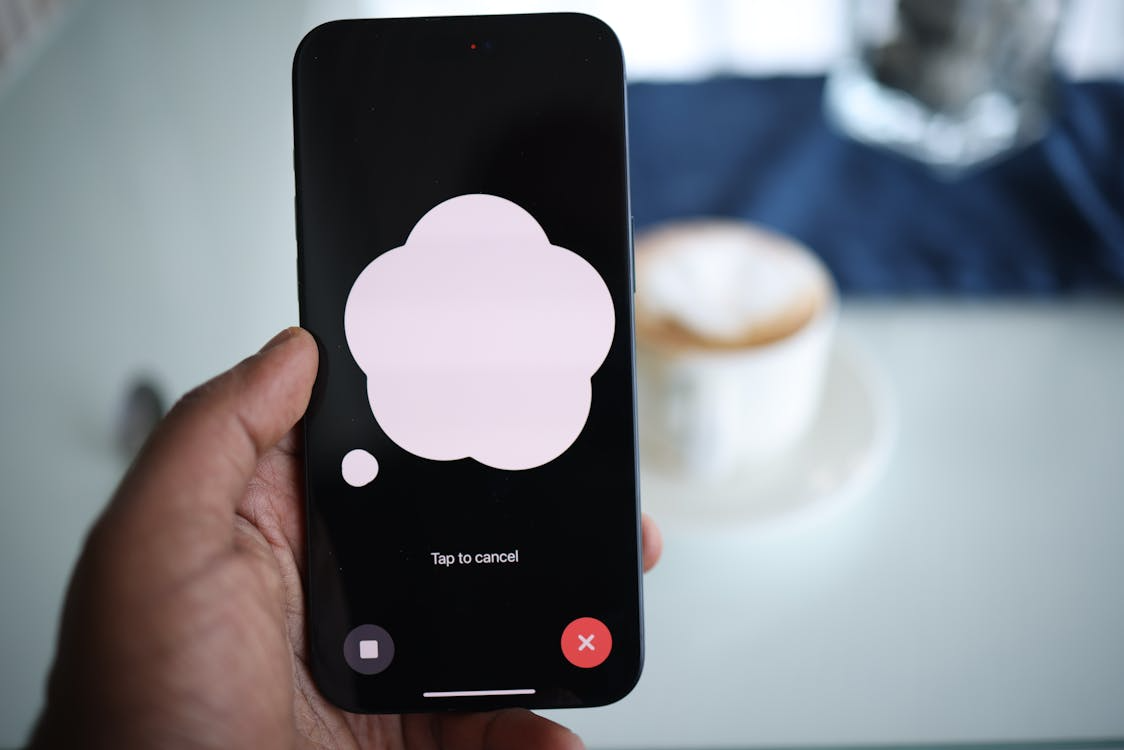Summary: Voice technology in healthcare enhances patient care by enabling clinicians to interact with electronic health records (EHRs) through spoken commands, significantly reducing documentation time and improving workflow efficiency. Key benefits include:
- Streamlined appointment scheduling and prescription refills.
- Reduced burnout for healthcare providers through efficient charting.
- Improved patient communication and task management.
With over 70% of healthcare leaders adopting voice tech, tools like SPRY stand out as the top choice for integrating voice solutions effectively, ensuring better patient outcomes and operational efficiency.
Imagine telling your device to update a patient’s chart while keeping your eyes on your patient. No keyboard. No clicking around. Just your voice. Such convenience is becoming common across hospitals, clinics, and home healthcare settings.
According to a recent survey, more than 70% of healthcare leaders have either adopted or plan to adopt voice tech in some form. Schedule appointments, refill prescriptions, capture clinical notes, streamline documentation, and get real-time answers - all with the implementation of voice software. This enables better healthcare as the mundane ad-hoc tasks are left to technology to take care of.

For nurses, voice command updates help cut charting time and reduce burnout. For patients, voice apps simplify tasks that often feel frustrating - calling the clinic, requesting lab results, or remembering medication instructions.
Another study said that physicians using speech recognition tools have reduced documentation time by 17%. Faster diagnosis and better follow-ups. Isn’t this the point of technology?
With voice technology, you are not adding tech just for the sake of it. You are solving real problems - long wait times, staff shortages, and complex workflows with a tool that listens and responds in real time.
"Clinicians spend nearly 16 minutes on EHRs for every patient visit." (2021, Journal of the American Medical Association). That’s time taken away from face-to-face care.
Voice technology is shifting that balance. It's helping healthcare providers talk with their systems, not just type into them. Think of it as moving from clunky data entry to natural conversations. Only this time, the listener is an intelligent assistant built to help. You’ll see voice tech in operating rooms, hospital rooms, and even your pocket. From automating tasks to improving patient communication, AI voice tools are stepping up where healthcare needs them most.
In this post, you’ll understand what voice tech in healthcare looks like, without the hype. You’ll see exactly where it's impacting, how it works, and what the future holds. You’ll feel better equipped to consider how voice tools could help your team work smarter and deliver better care.
Understanding Voice Technology in Healthcare
At its core, voice technology lets people interact with computers through spoken commands. In the healthcare industry, clinicians can chart patient notes, pull up medical histories, or adjust a patient’s room settings. All by speaking.
Types of Voice Tools Used Today
You’ve probably seen voice tools in action, even without realizing it. These aren’t just digital assistants with pre-recorded answers. They’re innovative systems built to listen, interpret, and act in healthcare.
- Voice Recognition Software
This is the backbone of voice in healthcare. It turns spoken words into text. You speak, and it writes directly into your electronic health record (EHR). It’s faster than typing, and more natural too. Nuance Dragon Medical is a typical example clinicians use to dictate notes, reports, and orders.
- Virtual Voice Assistants
They work like Alexa or Siri, but with healthcare-specific knowledge. You can ask them to pull up lab results, schedule follow-ups, or remind patients about medications. Some are used bedside. Others sit inside clinical systems to help with routine tasks.
- Voice Biometrics
This tool uses your voice as a password. Instead of remembering logins, your unique vocal patterns verify your identity. It's instrumental in healthcare call centers and for secure patient access to records.
- Voice Analytics Platforms
These go beyond transcription. They analyze tone, stress levels, pacing, and choice of words to flag possible clinical insights. Think of it as a second layer of interpretation that picks up what might go unnoticed. Some early systems are being explored for mental health monitoring or early signs of cognitive decline.
- Voice-Powered Communication Systems
Voice tools have quietly transformed one of healthcare’s most overlooked friction points: communication. These aren’t just phone systems. Today’s platforms are HIPAA-compliant, cloud-connected, and integrated with EHRs, scheduling tools, and internal routing systems.
Their role is less about conversation, more about coordination. Whether it’s a nurse paging a lab, a voicemail being transcribed and routed, or a call center agent triaging follow-ups, voice systems now act as the connective tissue across the care continuum.
So where are they showing up?
Everywhere.
- In hospitals, during shift handoffs and patient monitoring
- In outpatient clinics and multilingual care environments
- In telehealth, for real-time translation and note-taking
- In home health, supporting check-ins and reminders
- In call centers, where reducing dropped calls improves access
By combining voice commands with secure messaging, clinicians can now set up virtual appointments, confirm visits via SMS, or deliver follow-up care from anywhere - quickly, simply, and without delay.
Companies like Nextiva are helping define what modern phone systems in medical offices can look like - not just handling calls, but enabling staff to speak, type, and coordinate care in the way that best fits the moment. The result is less friction, more flexibility, and a stronger connection between provider and patient.
How Voice Technology in Healthcare Elevates Patient Care
Instead of looking at the system for hours and working, voice technology does the same work in a few seconds. You dictate, and the work is done.
Voice technology creates space for listening and comfort. In a 2023 survey, 82% of clinicians reported that voice technology helped reduce interruptions during care.
Reducing clinician burnout
EHR burnout is real. Doctors spend hours clicking through templates after clinic hours. Voice dictation tools cut the load.
Faster documentation
Dictation allows providers to speak notes directly into the EHR. It is fast, natural, and lets them focus on the patient instead of the screen. Voice technology is also advancing in its ability to pixelated images from diagnostic scans, providing clearer visual information for clinicians.
Hands-free access
As surgeons and ICU staff cannot touch devices during procedures, voice commands let you check vitals or pull up lab results while staying sterile.
More facetime
When doctors aren’t buried in laptops, they engage better. Voice-free tools free up those precious extra minutes that can run a rushed consultation into genuine care.
Stronger patient communication
Voice assistants help patients, too. Whether translating a nurse’s instructions or answering back questions, voice tools make information more accessible.
Multilingual support
There is nothing to worry about if you do not understand a language. Voice technology bridges the gap between doctors, patients, and nurses who do not speak the same language.
Home reminders
We often forget instructions. Voice reminders delivered through smart speakers or phones reinforce medication times, exercise plans, or wound care steps.
Better access for seniors
Voice offers a simple, conversational way to get help, ask questions, or receive reminders - without screens or applications. Such is helpful for older patients or those with low vision.
Automating repetitive tasks
Every repetitive task is streamlined with voice technology. The mundane tasks are easier to do and save more time.
Scheduling and medical reminders
Patients can confirm appointments or get daily medication alerts via automated voice calls or intelligent assistants. This reduces no-shows and improves adherence.
Nurse call systems
Voice-activated nurse call replaces buttons. Patients speak to request help. Nurses get more intelligent alerts, improving response times.
Smarter rooms
Patients can use the platform to adjust lights, temperature, or blinds without needing to press a button or wait for a staff member.
Keeping care connected
In fragmented systems, communication often breaks down. Voice tools help bridge gaps across shifts and locations.
Real-time documentation
Voice dictation logs updates into EHRs in real time. No delay, no paper notes lost at the end of a long night shift.
Remote team sync
Mobile care teams can send or receive updates without logging into bulky systems, leading to faster decisions and fewer errors.
The Future of Voice in Healthcare
Voice tools are getting smarter. They are listening better, understanding more, and getting a better hold of insights along with automation.
Smarter listening
Natural language processing is improving fast. New tools can pick up tone, urgency, or clinical terms more accurately. In 2024, NLP accuracy in healthcare speech tools hit 92%, up from 85% in 2021.
Voice as a diagnostic tool
Some companies are working on vocal biomarkers. They are an early sign of illness hidden in your voice. Researchers are exploring voice clues for depression, Parkinson's, and even COVID-19.
Integrating with wearables
Imagine a wearable that tracks your vitals and uses voice to alert you or your doctor if something’s off. Voice + biometrics is where remote care is headed.
More personalized care
By analyzing speech patterns, future systems could flag cognitive decline, stress, or changes in behavior early. That means tailored care plans, caught sooner.
Leverage Voice Technology in Healthcare
Voice technology is practical, innovative, and already making healthcare better.
It eases the burden on providers. Similarly, it gives patients more control and comfort. It connects systems that were once siloed.
With Sprypt’s new AI and voice-first technology, healthcare teams can work together smoothly and focus on patient care. Streamline your front desk so that your ad-hoc tasks are taken care of by technology, and you will be left with extra time to improve your care delivery in your organization.
In 2025, voice tools will be your biggest support systems when you are leading a healthcare team. It’s not just about saving time. It’s about giving care faster and smarter. And that’s a conversation worth having.
FAQs
1. Is voice technology in healthcare HIPAA-compliant?
Yes, reputable healthcare voice solutions are built to meet HIPAA regulations, ensuring that all patient data is encrypted and secure. Always verify that the provider is compliant before adoption.
2. How accurate is voice recognition in medical settings?
With advancements in natural language processing, top medical voice recognition tools now achieve over 90% accuracy, even with complex terminology. However, noisy environments can still pose challenges.
3. Can voice technology help patients at home?
Absolutely. Voice assistants can remind patients to take medications, track symptoms, schedule appointments, and even alert caregivers if something is wrong.
4. What are the main challenges of adopting voice tech in hospitals?
Common challenges include integration with existing EHR systems, staff training, background noise interference, and initial implementation costs.
5. Will voice technology replace healthcare workers?
No. Voice technology is designed to assist — not replace — healthcare professionals. It automates repetitive tasks so clinicians can focus on patient care.
Reduce costs and improve your reimbursement rate with a modern, all-in-one clinic management software.
Get a DemoLegal Disclosure:- Comparative information presented reflects our records as of Nov 2025. Product features, pricing, and availability for both our products and competitors' offerings may change over time. Statements about competitors are based on publicly available information, market research, and customer feedback; supporting documentation and sources are available upon request. Performance metrics and customer outcomes represent reported experiences that may vary based on facility configuration, existing workflows, staff adoption, and payer mix. We recommend conducting your own due diligence and verifying current features, pricing, and capabilities directly with each vendor when making software evaluation decisions. This content is for informational purposes only and does not constitute legal, financial, or business advice.










